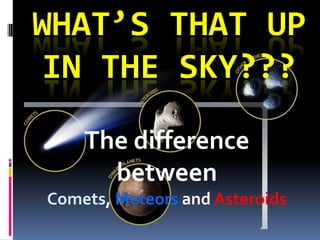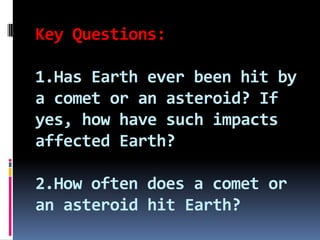This document discusses comets, asteroids, and meteors. Comets are dirty balls of ice that develop tails when passing near the sun. Asteroids are large chunks of rock and metal that orbit the sun. When asteroids and comet fragments enter Earth's atmosphere, they are called meteoroids. Most burn up and are seen as meteors, also known as shooting stars. If fragments survive entry and reach the ground, they are called meteorites. Large impacts from asteroids or comets in the past have created craters and possibly contributed to mass extinctions like the dinosaurs.























































